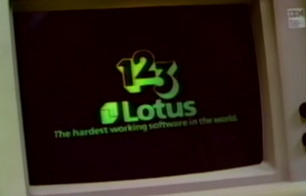Lotus 1-2-3: 30th Anniversary of the Coup
 Before Google began massively creating mobile and web versions of various office applications, the market was conquered by Microsoft. It was Microsoft, which established a real computer paradigm with a number of programs included in Windows, Microsoft, which made computers a powerful and affordable personal tool. But even earlier, the market was dominated by Lotus Development Corp c eë Lotus 1-2-3, released January 26, 1983. Next is a little history and an advertisement for an office suite in which everyone is dancing.
Before Google began massively creating mobile and web versions of various office applications, the market was conquered by Microsoft. It was Microsoft, which established a real computer paradigm with a number of programs included in Windows, Microsoft, which made computers a powerful and affordable personal tool. But even earlier, the market was dominated by Lotus Development Corp c eë Lotus 1-2-3, released January 26, 1983. Next is a little history and an advertisement for an office suite in which everyone is dancing.Why 1-2-3?
 And because this software included tools for working with three types of elements: spreadsheets, databases and graphics. In many ways, this 30-year-old software package laid the foundations for this type of program, which in our time has already begun to “conquer the clouds”: Google Docs, Apple iWorks and MS Office 365.
And because this software included tools for working with three types of elements: spreadsheets, databases and graphics. In many ways, this 30-year-old software package laid the foundations for this type of program, which in our time has already begun to “conquer the clouds”: Google Docs, Apple iWorks and MS Office 365. But, nevertheless, Lotus was not the first in its niche. This fame belongs to VisiCalc , the development of Dan Bricklin for Apple II. The legend about the creation of which is not very original and says that it was created by a student who was too lazy to read the data manually.
So what did Lotus bring?

When developing Lotus 1-2-3, Mitchell Kepor focused specifically on the 16-bit IBM processor, and not on the more common 8-bit processor, as believed that IBM would soon make 16-bit processors a recognized standard. It took $ 1 million to advertise the product, but the expense paid off very quickly. And this at the cost of one copy of $ 495. For 5 months, there were already 60 thousand buyers.
While everyone was happy about the main VisiCalc killer feature - the ability to make at least some tables, Lotus went ahead and reacted with great trepidation to the look of the already printed file, increased the number of number formats, allowed to change the width of the columns, added long labels, and what is most difficult to do manually is the graphs. And by the way, their product did it faster than competitors.
The innovativeness of Lotus 1-2-3 is well shown in a 1983 commercial in which everyone dances with joy .
Soon, Lotus passed the test of time and, as all good software relies, captured the market. And then
